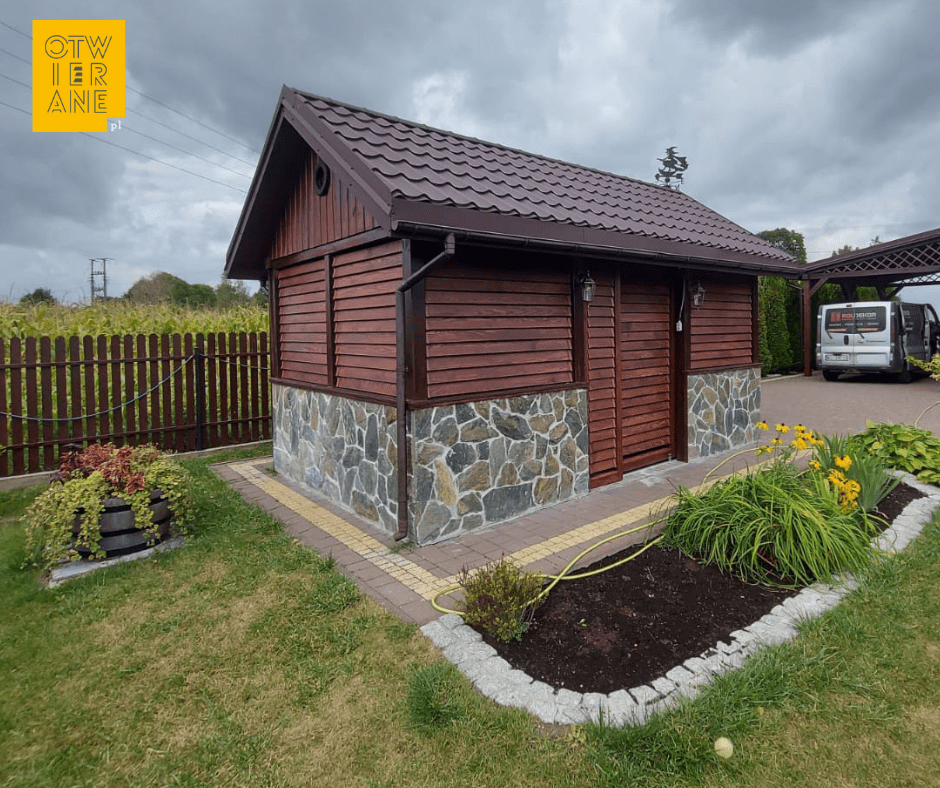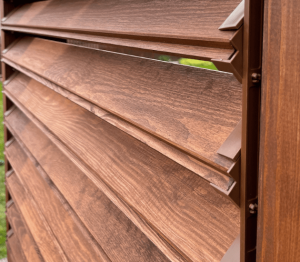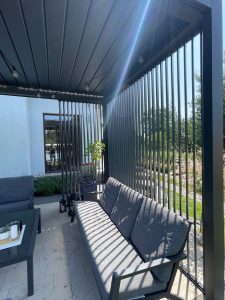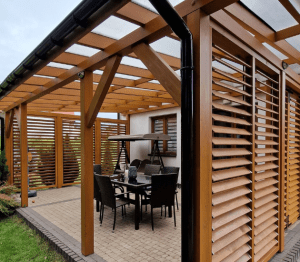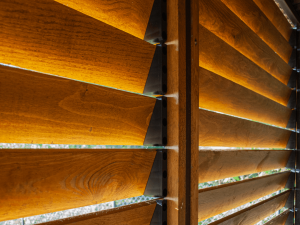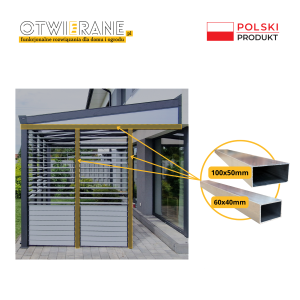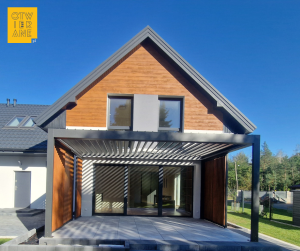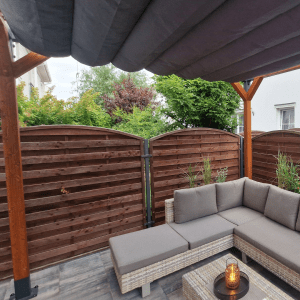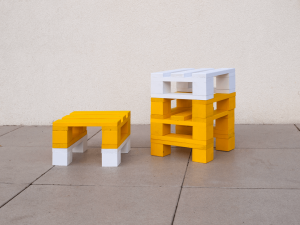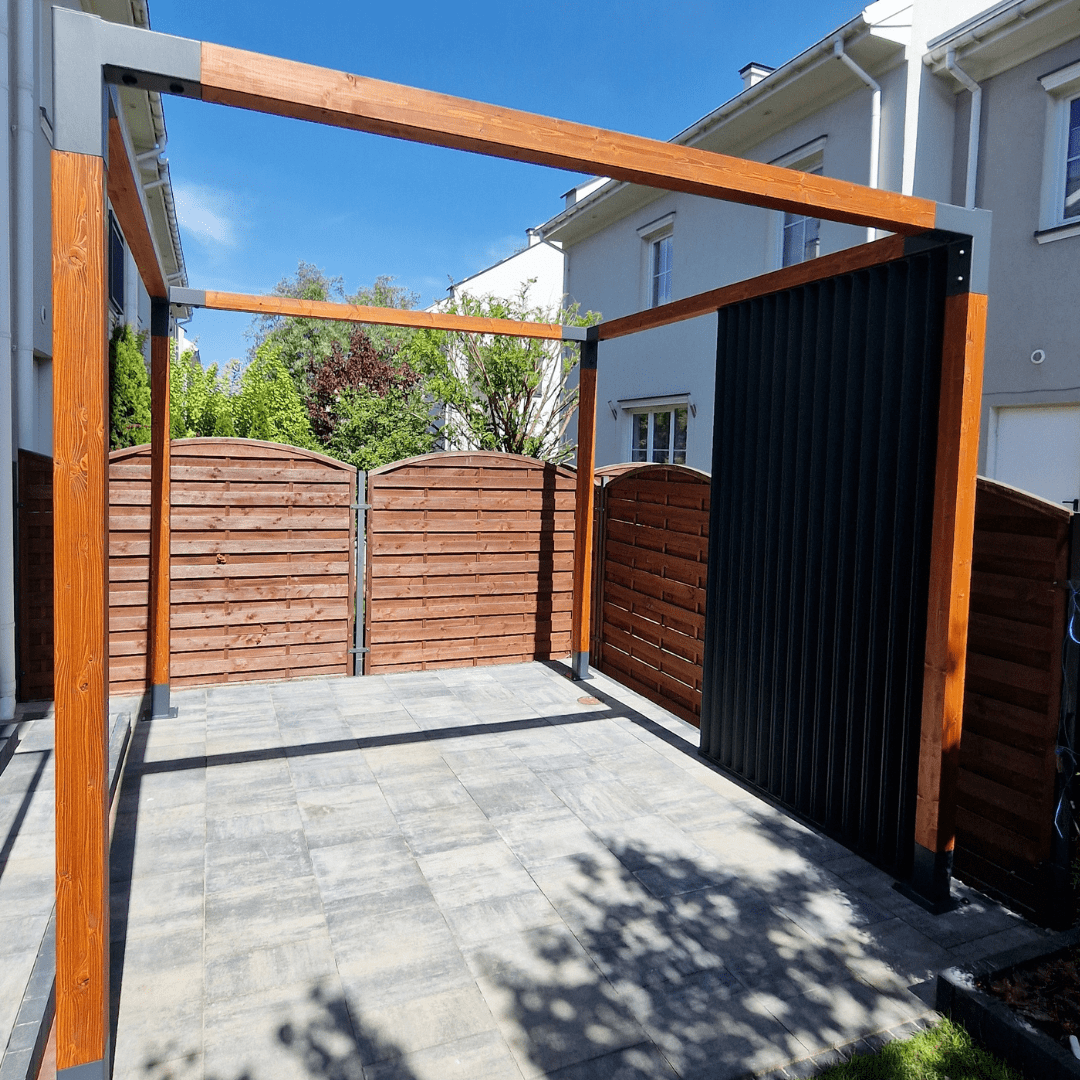
Freestanding or wall-mounted pergola? Which structure to choose
Freestanding or wall-mounted pergola? Which structure will work well on your site?
Pergola is a practical solution for the garden and on terrace. Shields against sunshineIt protects against sight, moisture and rain. Can be open or with built-in side walls. Open from the top or covered. It's great if you want to spend time outdoors. Or do you need a functional light space in your garden, for example as a carport or a place to store garden equipment? If you are considering erecting a pergola on your property, the first decision you need to make is about the its type of construction. The pergola can be free-standing or wall-mounted. Both solutions have their advantages. Let us help you make a decision.
Free-standing pergola
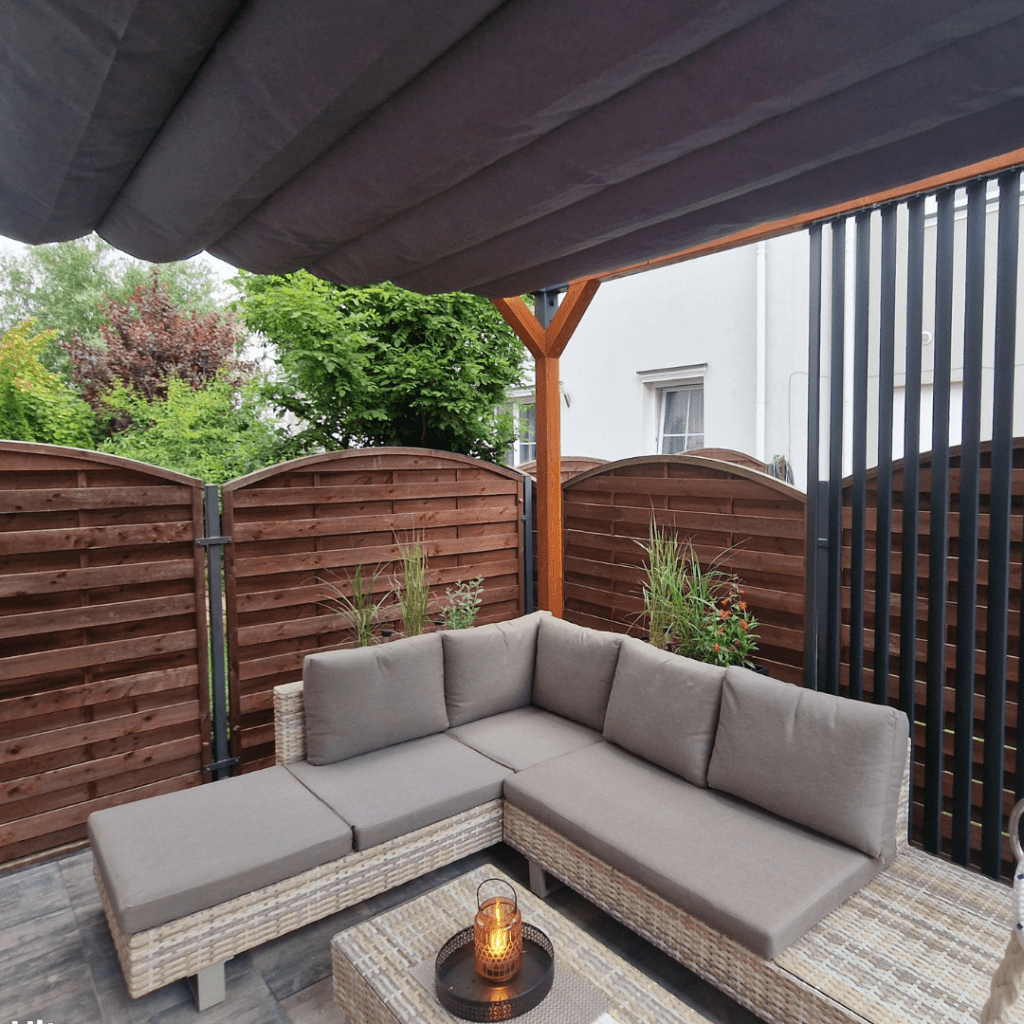
A free-standing pergola is a structure that consists of support beams that are bound by an upper frame. Unlike wall-mounted structures, it is not connected to the body of the building. It can be with or without a floor. It can be built-in or not. You can also roof it in a variety of ways. It all depends on your needs and the function of your pergola.
Advantage of the free-standing pergola is that it is much easier and quicker to put up. You don't have to take into account connections to the building. Nor do you need to have a suitably large piece of clean house wallswhich can serve as a wall and support for the structure. The free-standing pergola is very aesthetically pleasing and can be quite easily moved to another location. It will certainly prove useful as a framework for a terrace building, carport, resting placewhether barbecue shed.
Defects Such a solution is scarce. Certainly, if you want a freestanding pergola on your plot, you need to have a large enough area. One that doesn't overwhelm it and create a cramped impression. A freestanding pergola should be stabilised with a foundation. Then it will be resistant to wind.
Wall-mounted pergola
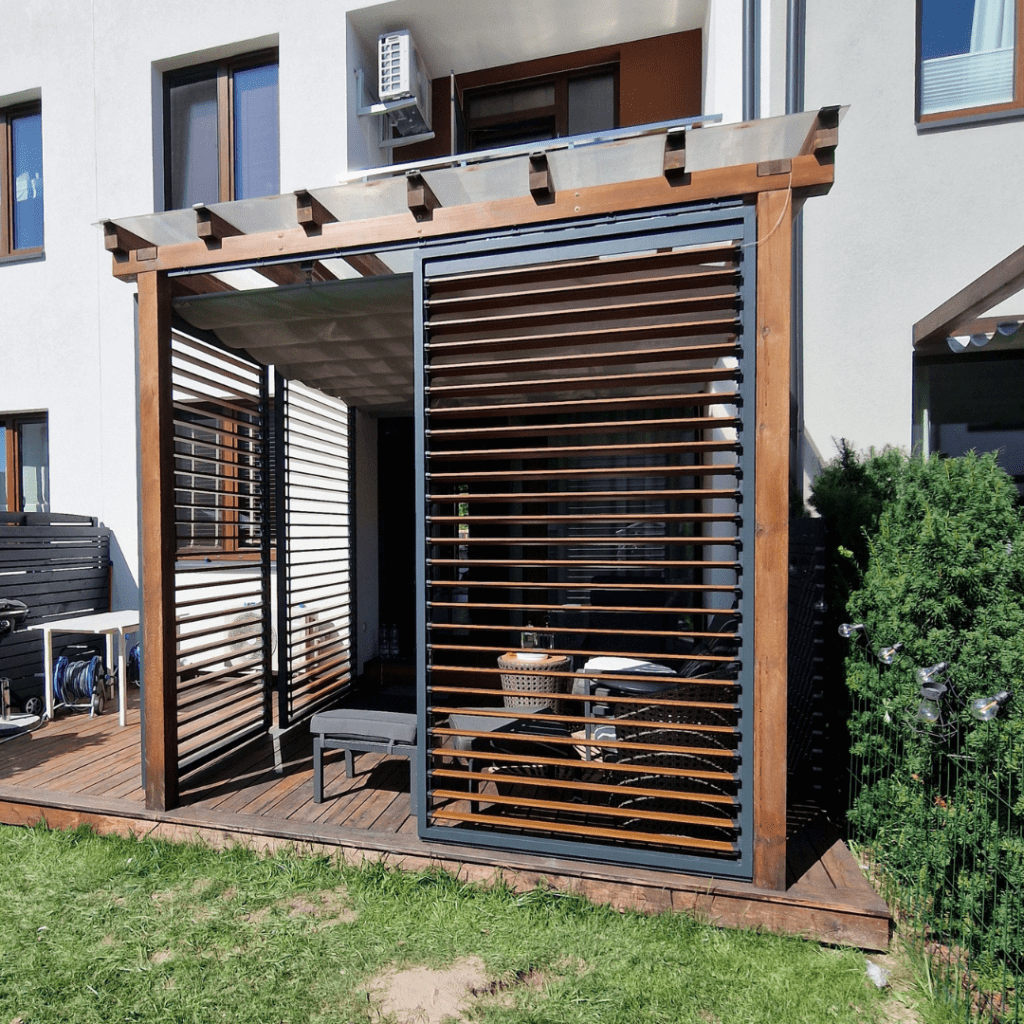
The wall-mounted pergola is attached to the one of the walls of the building. It forms an extension of the living space to the outside. It consists of horizontal beams supported by vertical posts, some of which are attached to the wall and others to the ground. A wall-mounted pergola can serve, for example, as a sheltered relaxation area, an outdoor dining area or support for climbing plants.
Advantages of a wall-mounted pergola is that it does not need to be very firmly anchored in the ground, as the house wall provides its support. It is usually cheaper to build than a freestanding one. You do not need to allocate a large space for it. It will work well as a carport or a shady place to relax.
Minus her is that construction usually takes longer and interferes irreversibly with the façade of the building.
Available canopies
You can roof your pergola in many different ways. In our article on terrace roofing we present the topic in detail. For roofing, we particularly recommend movable blindswhich allow the roof to be exposed at any time. Blinds can be wooden or aluminium. Aluminium will work best on an aluminium frame. Also consider openwork canopy with sloping boards. It looks great especially in terrace pergolas. In hot weather it is also perfect for roman blindswhich provide shade and look particularly beautiful. If, on the other hand, you dream of a transparent roof, a good choice would be polycarbonatewhich has the advantages of glass and is devoid of its disadvantages.
Modern pergolas in wood or aluminium
Wooden pergola will work in any setting. It will certainly be durable and beautiful, provided that the wood is properly maintained from time to time. Aluminium will be cooler and more futuristic in appearance, but will certainly be more durable and maintenance-free.
Does a pergola require a permit?
The short answer is - no. According to the building regulations, a structure with an area not exceeding 50 m², does not require planning permission. Provided it is built on a plot of land on which there is a residential building or intended for residential use.
However, if the shed exceeds the prescribed dimensions, it may be necessary to notify the relevant authority of your intention to build. It is also worth checking the local zoning planas it may contain additional requirements for the construction of such facilities.
Pergola for the garden and terrace
There are many benefits to having a garden or terrace pergola Both practical and aesthetic. It creates a pleasant, shaded outdoor space. It protects from excessive sun, rain and wind, allowing you to relax in comfort. It is also the perfect place for social gatherings, family dinners or romantic dinners outdoors. In addition, it can serve as a support for climbing plants. Aesthetically, the shelter adds structure and elegance to an outdoor space, enhancing its character and style. It can fit into any garden or terrace arrangement, increasing its functionality.
Are you planning to build a pergola in your garden?
Read our article: "How to make a modern wooden pergola". If you want to commission us for installation, scontact us.

